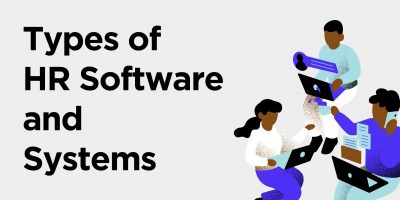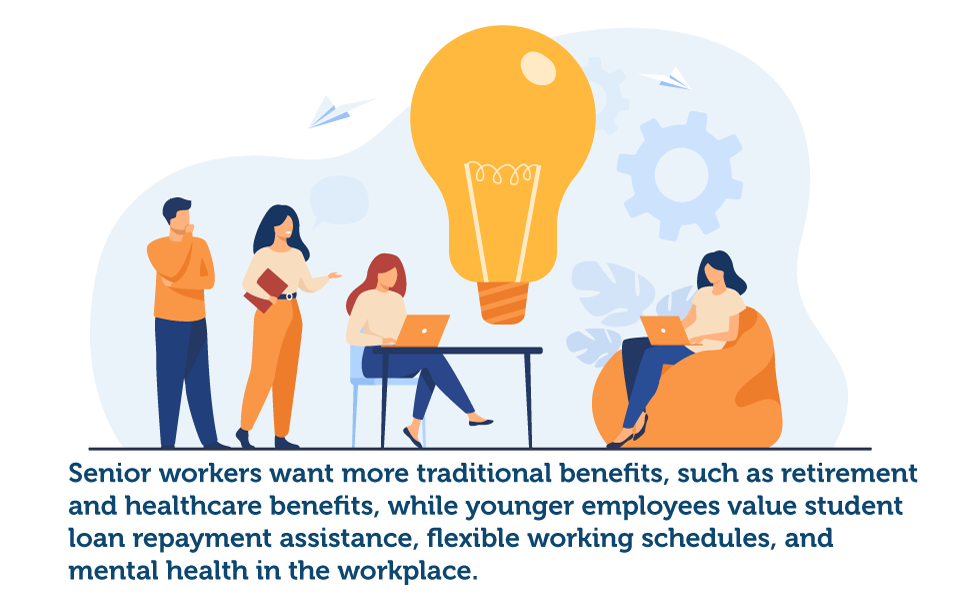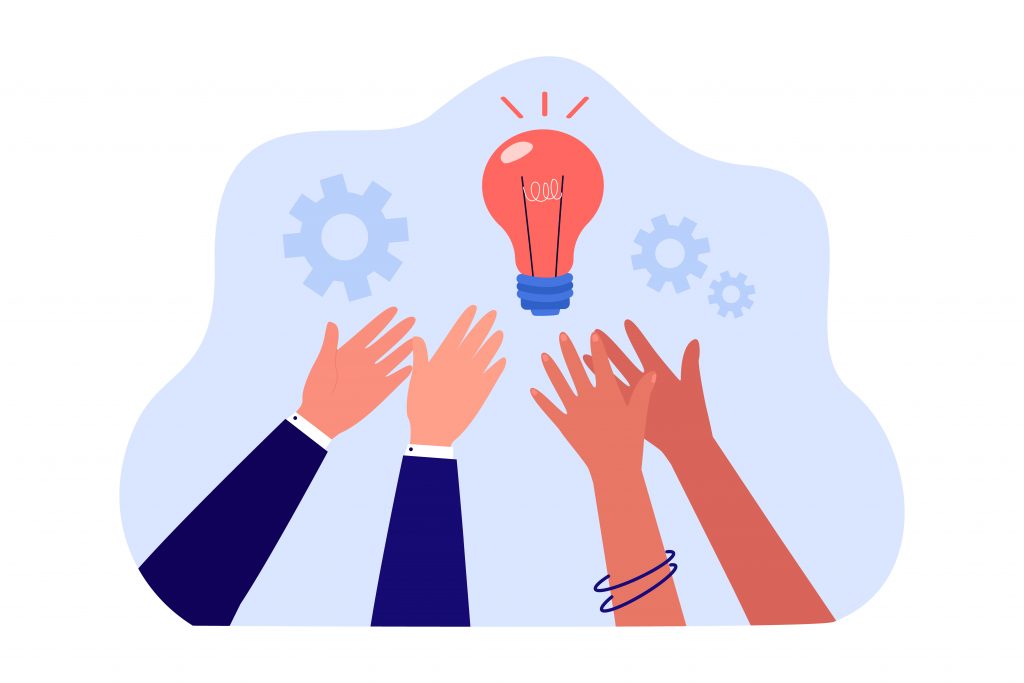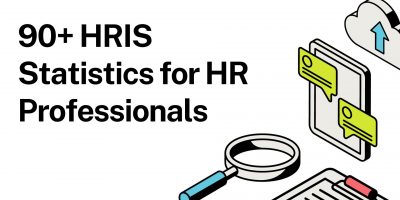
Types of HR Software and Systems
Gain insights into the diverse landscape of HR software and systems, exploring the solutions that streamline personnel management and enhance organizational efficiency.


CEO & Founder of Breadnbeyond

Co-Founder of Milkwhale

Digital Marketing Manager of Explainerd
The pandemic drew attention to the poor state of employees’ well-being and highlighted management’s role in determining workers’ quality of life.
Today, as the Great Resignation continues to reshape the workforce landscape, employees everywhere are looking to make a change driven primarily by companies offering better compensation and comprehensive benefits plans.
However, making a measurable difference through benefit offerings requires more than just lip service from the C-suite and the occasional benefits pamphlet. It needs fundamental changes in corporate policy and commitment across all leadership levels.
At the same time, we find that the message from the top doesn’t trickle down to the frontline managers – revealing a major chasm between various management levels.

The main levels of management in a company can be classified into three main categories:
So, what are management levels?
In a company, each management level may have different levels of responsibility and perform various functions – directing other employees, making decisions for an entire company, or leading a team within a branch. The larger the company, workforce, and size of the business, the more levels of management exist to determine the chain of command.
Managers influence employee morale, team communication norms, workloads, and job satisfaction. Because of their position as company leaders, they can actively participate in the benefit plan selection and serve as motivators for benefits and wellness program participation.
A strong commitment is needed at all management levels to ensure benefit program visibility and employee buy-in. However, this is not always the case.
Natasha Rei, Digital Marketing Manager of Explainerd, explains that many employers view employee benefits as an “expense” rather than an “investment.”
Rei comments, “When employers view employee benefits as an expense, they are more likely to cut corners and provide only the bare minimum in terms of coverage. This can lead to frustration and resentment among employees, who may feel that their employer is not valuing their well-being.”
Rei suggests that the way to overcome this is to educate employers on the importance of employee benefits.

Visionary leaders do not direct day-to-day activities. Instead, they determine the organization’s objectives, strategies, and business plans. In other words, the highest level of management sets the course for the company to grow and succeed. However, it is also solely responsible for any company’s failures.
When it comes to benefits, forward-thinking employers must develop a framework of key practices that match with overall purpose.
This includes articulating clear organizational purpose to stakeholders and shareholders through ESG commitments and demonstrating corporate social responsibility by creating opportunities for employees to align their individual purpose with that of the company.
Top management should select three to four values that managers and their teams should focus on and provide ways that they can embody those values. Fundraising opportunities, volunteer days, and PTO donations for co-workers are some examples of key practices and approaches.
Today, employees want to be valued, supported, and seen more than ever. So, to be successful in a leadership role, you must make data-driven decisions while delivering benefits in a work environment that reflects employees’ unique personal needs.
Benefits programs – such as extended parental leave and childcare benefits, mental health counseling, and flexible benefits – all help employees thrive at work and home. With the healthcare bill exploding each year, employee benefits have the potential to be life-changing, especially those centered around personal healthcare.
A benefit strategy centered around your employee’s wants and needs can tremendously impact the workplace, boosting engagement and morale, and lowering absenteeism and turnover rates.
Furthermore, as top-level management is responsible for setting the strategy and goals of the organizations, their messages contain essential details that must be conveyed accurately across all employee levels. Therefore, finding the appropriate mode of communication is key in aligning the organization and reaching the goals set by upper management.
While the HR leaders of today recognize the value of offering employee benefits, the problem many are facing is low participation rates. Undoubtedly, this can be frustrating when HR professionals work hard to develop a benefits strategy that reflects the company’s goals and values and addresses the varying needs of its employees.
To make matters worse, research shows that 80% of employees do not read benefit materials, and 49% do not understand their benefits. Confusion surrounding benefits can create tension and even conflicts among employees and managers.
Andre Oentoro, CEO & Founder of Breadnbeyond, comments, “One of the biggest problems is that managers often have different ideas about what employee benefits are available. This can be a major issue if one manager thinks that employees are entitled to a certain benefit, but another manager does not. It can also create a lot of confusion and can even lead to legal problems.”
For this reason, HR leaders need to help managers and employees understand the basics before moving on to higher-level issues like transformation and agility. The starting focus areas need to be simplifying complex processes, consumerism education, and clarifying the value of benefits programs to middle management.
Unsurprisingly, low benefits literacy leads to these programs not being leveraged the way HR teams intended, which happens when there is no communication with the employee population.
The aforementioned survey also showed that most companies (57%) believe benefits communication is HR’s responsibility. Therefore, the HR department’s role is to facilitate and bridge the communication gap between these various hierarchy levels.
The real challenge for HR managers is finding out what employees really value and crafting a benefits strategy that offers ample support to workers. While HR needs to keep their hands on the pulse of workers’ needs, they also need to be aware of their biases.
For the first time in history, there are four generations in the workplace, and it is vital that employers craft benefit offerings that serve all of them. Surveys show that senior workers want more traditional benefits, such as retirement and healthcare benefits.
At the same time, younger employees value student loan repayment assistance, flexible working schedules, and mental health in the workplace.
Moreover, the benefits communication strategy must also consider that workers in different age groups have distinct preferred ways of communicating – snail mail, websites, social media, robocalls, and print distribution.

Middle management is responsible for executing the goals set by top-level management. In many ways, they are the intermediary between the top and low-level management and are tasked with coordinating the activities of all departments.
For this reason, mid-managers usually experience the most pressure as they have to meet top-level managers’ requirements and low-level managers’ demands while neglecting their own needs. Middle management is also responsible for setting their own goals for respective departments or branches.
To a large degree, middle-management are the people who are expected to assist, motivate, and empower employees. Therefore, managers and their actions must align with top leadership’s organizational goals. Executive leaders rely on mid-level managers to respond to workers’ needs, generate excitement for benefit programs, and connect employees to available resources.
However, evidence suggests that the message from the top doesn’t spill over to middle management, and there is a lack of wholehearted buy-in of direct supervisors.
A Workplace Wellness Programs study suggested that most middle-level managers are viewed as unenthusiastic supporters or unengaged in benefit programs. In fact, supervisors commonly view wellness program participation as a drain on productivity and actively discourage their workers from engaging in such activities.
Andre Oentoro acknowledges that the disconnect between management levels can be a real problem for businesses. Oentoro explains this further by stating, “Managers need to be on the same page regarding employee benefits, but often they’re not. This can lead to confusion and frustration among employees, and can even result in legal problems.”
Aligning your benefits strategy to company culture means not sending mixed messages. For example, to prioritize lowering stress, companies must ensure supervisors and frontline managers support employees by giving them regular breaks, thus avoiding burnout and encouraging wellness program participation.
Recently, there has been an increasing recognition that financial benefits are not the only benefits that attract and retain staff. Employers are enhancing the employee experience in many ways, changing work patterns by enforcing a four-day work week or introducing flexible rewards packages so that individuals can choose benefits that best fit their needs – all in an effort to make employees happy at work.
Undeniably, there is a growing demand for benefits relating to work-life balance and improved work conditions. However, there is also a growing conflict between this desire and the reality on the ground.
Ebnu Sudarso, Co-Founder of Milkwhale, comments, “Although employee benefits are becoming more and more flexible these days in order to prioritize the wellbeing of employees, it’s still not enough.” Sudarso explains, “This is because the corporate working style we are accustomed to is still prominent today. Hence, there are many companies and businesses that are unable to apply flexible employee benefits in their human resources.”
All in all, a clear picture emerges of a “benefits disconnect” between top-management aspiration, middle-management execution, and employees’ demands. It is a multifaceted problem that boils down to misalignment and a lack of communication in the hierarchy.
Sudarso confirms this sentiment by explaining, “So, I believe the disconnect is caused by a lack of connection between management levels. The hierarchy still exists, making it hard for employees to voice their opinions and ask for help when needed.
A good way to solve this issue is by encouraging employees and management levels to communicate more with each other. This can be done through team-building activities, corporate events, and get-togethers”.
Resolving this disconnect is crucial to unburdening managers, driving employee performance, and sustaining long-term success. So, what can be done to bridge this divide?

Benefits can be confusing – there are various types of coverage, with numerous options with different costs. To further add to the complexity, companies work with different vendors to deliver employee benefit programs, and things can get overwhelming when employees want to use a benefit. Each provider has its own platform, various means of contact, rules, and requirements.
While the benefits experience sounds complex, it doesn’t have to be that way.
Understanding which barriers prevent employees from using the benefits is crucial in redesigning the benefits experience. When employees have the opportunity to select the benefits they find essential, they feel empowered and supported. HR platforms can make this overly complex process incredibly simple and easy to administer for employees and employers. As a response, employers are increasingly offering benefits navigation platforms or advocacy services.
Effective communication is one of the best ways to bridge the disconnect between various management levels. This means organizations need to:
As Oentoro outlines, “The solution to this problem is to have a clear and concise policy regarding employee benefits. This policy should be created by the top management level and should be followed by all managers. This will ensure that everyone is on the same page and that there is no confusion about what benefits are available.”
By embracing simplicity by design, companies can create benefit programs that employees value and are both easy to use and understand.
Considering the economic uncertainty and tight labor market we are experiencing, the benefits program is a key part of companies’ talent acquisition strategy that can help organizations attract and retain employees.
However, high-performing companies are not only offering comprehensive benefits programs but also building leadership accountability, improving accessibility, and simplifying complex processes to drive participation.
Changes in corporate policy, communication, and culture – backed by commitment and buy-in from all management levels – are the foundation for bridging the disconnect regarding employee benefits.
Browse our curated list of vendors to find the best solution for your needs.
Subscribe to our newsletter for the latest trends, expert tips, and workplace insights!

Gain insights into the diverse landscape of HR software and systems, exploring the solutions that streamline personnel management and enhance organizational efficiency.

Explore HRIS statistics for informed decision-making and streamlined human resource management.
From improved scheduling to increased productivity – explore why implementing an effective time-tracking and attendance system can be vital in the workplace.

Dress codes have gone vague and viral. But could your look be quietly costing you trust, influence, or even a lawsuit?
Used by most of the top employee benefits consultants in the US, Shortlister is where you can find, research and select HR and benefits vendors for your clients.
Shortlister helps you reach your ideal prospects. Claim your free account to control your message and receive employer, consultant and health plan leads.